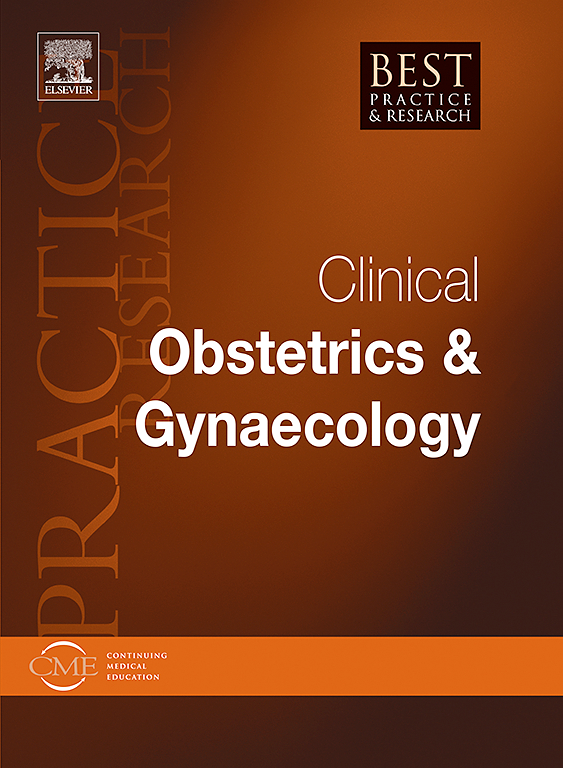移植未成熟睾丸组织或细胞以恢复男性生育能力的时机合适吗?专家对低温保存睾丸组织或细胞自体移植恢复生育能力的临床应用的看法
IF 4.1
2区 医学
Q1 OBSTETRICS & GYNECOLOGY
Best Practice & Research Clinical Obstetrics & Gynaecology
Pub Date : 2025-07-11
DOI:10.1016/j.bpobgyn.2025.102638
引用次数: 0
摘要
冷冻保存的未成熟睾丸组织(ITT)或精原干细胞(ssc)移植是恢复睾丸组织或细胞悬浮液冷冻保存以保持生育能力的患者生育能力的有希望的方法。目前全球已有3000多份睾丸冷冻保存样本,迫切需要临床可行的、标准化的方案来利用冷冻保存的睾丸组织/细胞恢复生育能力。数十年的研究表明,未成熟睾丸组织移植(ITTT)或精原干细胞移植(SSCT)在动物模型(包括非人灵长类动物)中的可行性。然而,在将这些选择转化为人类临床实践方面仍然存在重大挑战。关键因素包括严格的患者选择,可靠的移植前评估以降低恶性细胞重新引入的风险,以及优化移植时间以支持精子发生。制定全面的后续协议和国际数据共享框架对于优化成果至关重要。虽然提供了遗传亲子关系的潜力,并提高了癌症幸存者的生活质量,但这些技术需要进一步改进,以确保安全性、有效性和现实的期望。本文概述了通过合作和创新推进睾丸组织/细胞自体移植临床转化的框架。本文章由计算机程序翻译,如有差异,请以英文原文为准。
Is the time right for transplanting immature testicular tissue or cells to restore male fertility? Expert perspectives on clinical implementation of autotransplantation of cryopreserved testicular tissue or cells for fertility restoration
Transplantations of cryopreserved immature testicular tissue (ITT) or spermatogonial stem cells (SSCs) represent promising approaches to restore fertility in patients with testicular tissue or cell suspension cryopreserved for fertility preservation. With over 3000 testicular samples cryopreserved globally, clinically viable and standardized protocols restoring fertility using cryopreserved testicular tissue/cells are urgently needed. Decades of research demonstrate the feasibility of immature testicular tissue transplantation (ITTT) or spermatogonial stem cell transplantation (SSCT) in animal models, including non-human primates. However, significant challenges remain in translating these options to human clinical practice.
Critical factors include rigorous patient selection, robust pre-transplant evaluations to mitigate risks of malignant cell reintroduction, and the optimization of transplantation timing to support spermatogenesis. Developing comprehensive follow-up protocols and international data-sharing frameworks is essential to optimize outcomes. While offering the potential for genetic parenthood and enhanced quality of life for cancer survivors, these techniques require further refinement to ensure safety, efficacy, and realistic expectations. This paper outlines the framework for advancing the clinical translation of autotransplantation of testicular tissue/cells through collaboration and innovation.
求助全文
通过发布文献求助,成功后即可免费获取论文全文。
去求助
来源期刊
CiteScore
9.40
自引率
1.80%
发文量
113
审稿时长
54 days
期刊介绍:
In practical paperback format, each 200 page topic-based issue of Best Practice & Research Clinical Obstetrics & Gynaecology will provide a comprehensive review of current clinical practice and thinking within the specialties of obstetrics and gynaecology.
All chapters take the form of practical, evidence-based reviews that seek to address key clinical issues of diagnosis, treatment and patient management.
Each issue follows a problem-orientated approach that focuses on the key questions to be addressed, clearly defining what is known and not known. Management will be described in practical terms so that it can be applied to the individual patient.

 求助内容:
求助内容: 应助结果提醒方式:
应助结果提醒方式:


